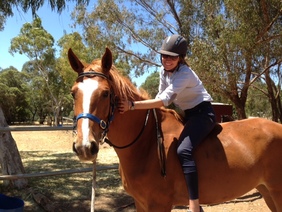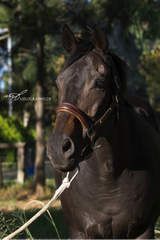
Foundation training (or "breaking-in" as it used to be known) is one of the most important parts of a horse's early training. During this phase the horse is trained to stop, go forwards and turn from light signals and habituated to the saddle, the weight of the rider and the different environments that he might have to work in as a riding horse. Along the way he'll also learn to park in cross ties, stand quietly at the mounting block and habituate to running water. It's an awful lot to learn in just four to six weeks, especially for a young horse that might still be finding his own balance and is probably coping with being away from home for the first time.
The training method that we use was first demonstrated by Kel Jeffries (in his book The Jeffries Method) and later refined by Andrew McLean. Sophie and I have adapted it a bit because we always work together. It's not a set formula, it's more like a series of guidelines and objectives that we work through. We use this method for both training and retraining and believe that it minimises the stress that can sometimes accompany times of rapid learning.
I really believe in this way of training because it's based on touch. I love watching horses running together in a paddock. I love how they rub and bump up against each other. Whether they are playing, fighting, grazing or resting – they do it together. The horse has 55 million years of evolution and in every part of that evolution he lived as part of a herd. So it's little wonder that we've found that when our horses become part of a herd they seem more content and more resilient to other stress. Horses form very strong bonds with each other and they mostly do it through physical contact. If we can't supply a herd of other horses then I think it's really important that we supplement that contact with our training.
The training method that we use was first demonstrated by Kel Jeffries (in his book The Jeffries Method) and later refined by Andrew McLean. Sophie and I have adapted it a bit because we always work together. It's not a set formula, it's more like a series of guidelines and objectives that we work through. We use this method for both training and retraining and believe that it minimises the stress that can sometimes accompany times of rapid learning.
I really believe in this way of training because it's based on touch. I love watching horses running together in a paddock. I love how they rub and bump up against each other. Whether they are playing, fighting, grazing or resting – they do it together. The horse has 55 million years of evolution and in every part of that evolution he lived as part of a herd. So it's little wonder that we've found that when our horses become part of a herd they seem more content and more resilient to other stress. Horses form very strong bonds with each other and they mostly do it through physical contact. If we can't supply a herd of other horses then I think it's really important that we supplement that contact with our training.


 RSS Feed
RSS Feed
